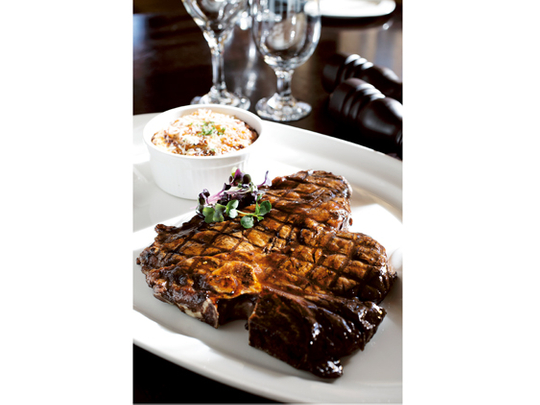
I’ve always been a prolific meat eater. In fact, for a long time I have considered myself as a bit of a meat connoisseur, proudly stating to waiters that I will take my steak rare, and turning my nose up at those who request a well-done piece of meat.
So when I got the chance to attend a ‘meatology’ session at South African steakhouse The Meat Co at the Souq Madinat Jumeirah, I was expecting a delicious experience, but I didn’t hold out hopes of learning too much about steak. How wrong I was...
The first lesson I learnt was that beef doesn’t have to come from a cow. OK, that might be slightly misleading, so hear me out before you accuse your favourite restaurant of serving you up a slice of something masquerading as beef.
A cow is an adult female that has given birth to a calf, whereas a female cow that hasn’t given birth and is under three years old is called a heifer, and a young castrated male is called a steer. So yes, the meat does come from a cow as you or I would know it, but depending on the age and sex of the animal, it is called different things.
The Meat Co takes its beef from heifers and steers aged between two and three years old. But it’s not that simple, as you need to feed the cattle a specific diet (grain-fed cattle tends to produce juicier meat), and the breed of cattle is also important, with the two breeds of choice being the Angus and Wagyu.
Both of these breeds are renowned for producing tender beef with a high unsaturated fat content. Now I know that whenever the f-word is mentioned,
health freaks will run for the hills, but the key here is the u-word: unsaturated.
Unsaturated fat produces something known as ‘marbling’ in beef, which can make a steak look fatty and low quality, when it is in fact a top-grade product. Prabakaran Manickuam (or chef Praba as he likes to be known), head chef at the Meat Co, is a passionate advocate of marbling. “It is not unhealthy,” he says.
“Marbling contains protein, iron, zinc and omega-3 fatty acids, which help the body fight against cancer. We need to educate people that there are different types of fat.”
Know your cuts
The next lesson in my culinary education was on the primal cuts of beef. From the tender fillet, to the highly marbled prime rib, to the flavourful rump, each different cut has its own characteristics and the price of a steak from different cuts on the same animal can vary massively.
“You only get around six kilograms of fillet on a whole animal, so the price of fillet steak is always going to be high,” says chef Praba. And here’s where I’ve been going wrong all these years. “Each different cut should be cooked in a different way to get the best out of it,” he says.
So the fillet should be served rare, as it is the tenderest, but a cut with high marbling like prime rib should be served medium or above, so the marbling in the meat will melt, giving the steak a super-juicy texture and rich flavour.
Give it some rest
But you can get the best cut of meat in the world, cook it perfectly and then still ruin it at the last minute. The key to a really good steak, according the chef Praba, is resting the meat once it’s cooked.
“You need to cook the steak on a really high heat, but this makes the proteins in the meat contract, which makes even the tenderest meat go tough,” he says. “If you slice the steak immediately after cooking, then all the juices and flavours will run out, causing the meat to ‘bleed’ on the plate. But leave the steak to rest for just a couple of minutes after cooking and the meat will relax and the juices will be locked in. Resting is definitely the key to a perfect steak.”
So now we’ve got the correct cattle, fed it properly, chosen the right cut, cooked it appropriately and, most importantly, rested the meat, there is only one thing left to do: choose what to eat it with. Chef Praba likes his steak served classically.
“Vegetables like mushrooms and spinach go well with steak, but I love chips!” He says, “I like mine done simply with chips and peppercorn sauce.” On the following pages Chef Praba shares his top five recipes to help you make the most of your meat.












